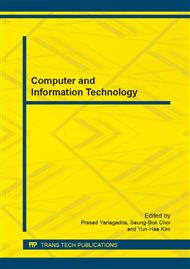p.987
p.991
p.995
p.1000
p.1005
p.1012
p.1016
p.1021
p.1027
Payload-Distributed GEO Communication Satellite System and Opportunistic Network Coding Based Cooperative Information Exchange
Abstract:
Fractionated Spacecraft is a concept which transforms a traditional monolithic spacecraft into a network of elements where a free-flying payload module is supported by nearby free-flying infrastructure modules. In this paper, we propose a novel concept named as Payload-Distributed GEO Communication Satellite System (PD-GEO) which divides the traditional GEO communication satellite into several modules. Those modules can be reconfigured, added, or exchanged independently from the others, and be reused over several missions. Then, for the purpose of reliable and high-efficient data transmission in this system, an opportunistic network coding based cooperative information exchange (ONC2IE) scheme was presented. Qualitative analysis and extensive simulations demonstrate the effectiveness and efficiency of ONC2IE.
Info:
Periodical:
Pages:
1005-1011
Citation:
Online since:
February 2014
Authors:
Price:
Сopyright:
© 2014 Trans Tech Publications Ltd. All Rights Reserved
Share:
Citation:


